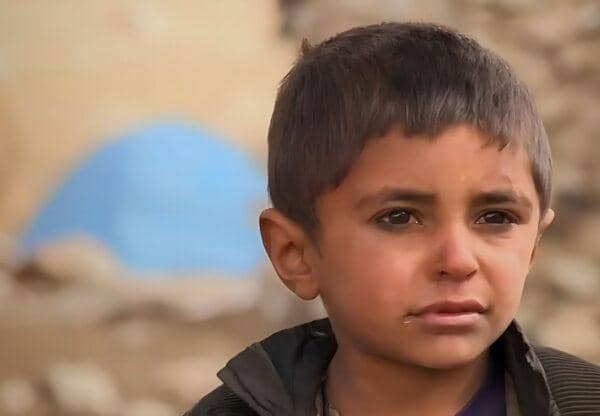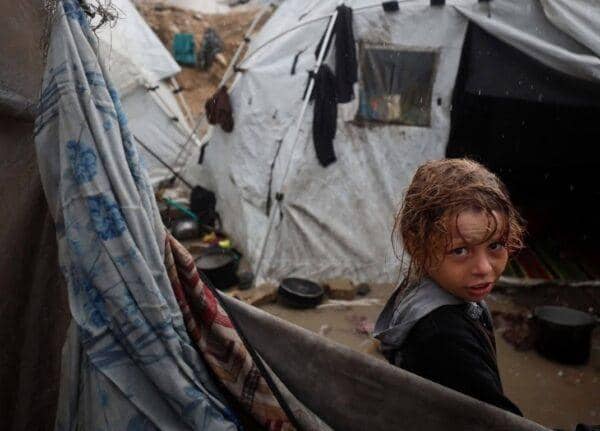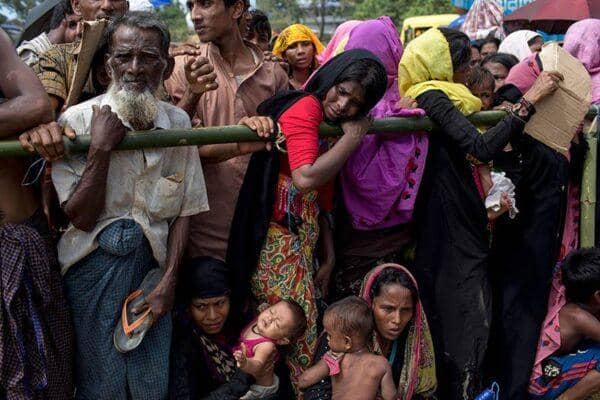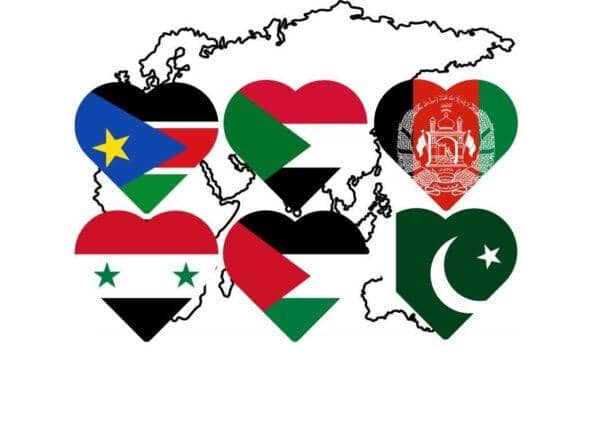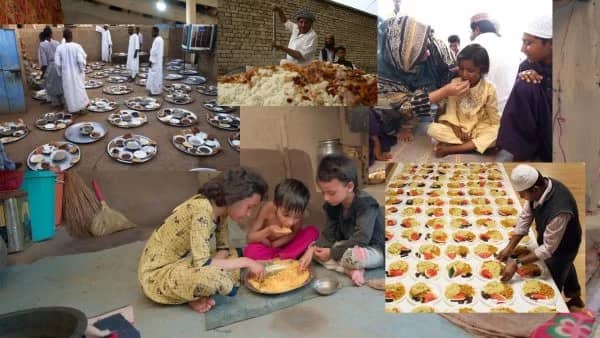ʿAlī b. Mūsā (a) (Arabic: علي بن موسی) (b. 148/765 – d. 203/818) is the eighth Imam of Twelver Shia. His teknonym was Abū l-Ḥasan (Arabic: أبو الحسن) and his most famous title was al-Riḍā (Arabic: الرضا). He (a) was Imam for 20 years. Imam al-Rida (a) was born in Medina and was martyred in Tus.
Al-Ma’mun al-‘Abbasi brought Imam al-Rida (a) to Khorasan by force and despite Imam’s will made him heir apparent. The debate sessions al-Ma’mun al-Abbasi held between Imam al-Rida (a) and personalities of other religions and schools of thought are famous.
He was martyred by al-Ma’mun in Tus. The holy shrine of Imam al-Rida (a) is located in Mashhad and every year millions of Muslims from different countries visit it.
Lineage, Birth, Martyrdom and Family
Lineage, Teknonym, and Title
His lineage is mentioned as ‘Ali son of Musa son of Ja’far son of Muhammad son of ‘Ali son of Husayn son of ‘Ali b. Abi Talib. His teknonym was Abu l-Hasan (أبوالحسن). His most famous title was al-Rida (الرضا). Some sources said al-Ma’mun gave him this title but Imam al-Jawad (a), in a hadith, said Allah gave his father this title (al-Rida). Al-Sabir (الصابر), al-Radi (الرضي), and al-Wafi (الوافي) are among his titles. He is also known as “the knowledgeable among the progeny of the Prophet (s)”. It is reported that Imam al-Kazim (a) would address his children saying: “Your brother, Ali b. Musa, is the the knowledgeable among the progeny of the Prophet (s).”
Birth
Imam al-Rida’s (a) birthday has been reported to be on Thursday or Friday, Dhu l-Qa’da 11, Dhu l-Hijja, or Rabi’ I of 148/765, 766 or 153/770. Al-Kulayni reported Imam’s (a) birthday in 148/765, which is agreed by most historians.
Mother
Al-Shaykh al-Saduq wrote about Imam’s (a) mother that, “she was a concubine called Tuktam when Imam al-Kazim (a) owned her. When Imam al-Rida (a) was born, Imam al-Kazim (a) named her Tahirah.” Al-Saduq says, “Some have said that the name of Imam al-Rida’s (a) mother was Sakan al-Nawbiyya. She was also called al-Arwi, Najma, and Samana; and her teknonym was Umm al-Banin.
In another account it is mentioned that Imam’s (a) mother was a pious concubine called Najma who was bought by Hamida, Imam al-Kazim’s (a) mother, and gifted to Imam al-Kazim (a) who called her Tahira after she gave birth to Imam al-Rida (a). It has been said that Imam al-Rida’s (a) mother was from Nawba.
Wives
Imam al-Rida (a) had a wife named Sabika who is reported to be from the family of Maria, wife of the Prophet (s).
In some historical sources, it is reported that Imam al-Rida (a) had another wife beside Sabika; that al-Ma’mun suggested to Imam al-Rida (a) to marry Umm Habib, al-Ma’mun’s daughter, and Imam (a) accepted. Al-Tabari mentioned this marriage in the events of 202/817-8. They say that the objective that motivated al-Ma’mun to make this proposal to the Imam (a) was to seek greater proximity with Imam al-Rida (a) and obtain more information about his plans from inside his house. Al-Suyuti also mentioned the marriage of al-Ma’mun’s daughter to Imam al-Rida (a), but did not mention her name.
Children
There is a disagreement as to the number of children the Imam al-Rida (a) had. Some have reported them as five sons and one daughter with the names of Muhammad al-Qani’, al-Hasan, Ja’far, Ibrahim, al-Husayn, and ‘A’isha. Sibt b. al-Jawzi said that Imam (a) had four sons with the names of Muhammad (Abu Ja’far al-Thani), Ja’far, Abu Muhammad al-Hasan, Ibrahim, and one daughter but did not mention her name. It has been said that one of the children of Imam al-Rida (a) who was 2 years old or less is now buried in Qazvin known as Imamzada Husayn (a) and Imam al-Rida (a) had been in that city in 193/808-9. Al-Shaykh al-Mufid did not mention any child of Imam al-Rida (a)except Muhammad (a). Also, Ibn Shahrashub and al-Tabrisi both agree with that idea. While others mentioned the existence of a daughter of Imam (a) called Fatima.
Imamate
The period of imamate of Imam al-Rida (a) after his father was 20 years (183/799 – 203/818) which was contemporary with the caliphate of Harun al-Rashid, Muhammad al-Amin (approx. 5 years) and al-Ma’mun [20 years; of which, the first 5 years was contemporary with Imam al-Rida (a)].
Proofs of Imamate
Some of those who have narrated Hadiths from Imam Musa b. Ja’far (a) regarding the imamate of his son, ‘Ali (a) are: Dawud b. Kathir al-Raqqi, Muhammad b. Ishaq b. ‘Ammar, ‘Ali b. Yaqtin, Na’im al-Qabusi, al-Husayn b. al-Mukhtar, Ziyad b. Marwan, al-Makhzumi, Dawud b. Sulayman, Nasr b. Qabus, Dawud b. Zirbi, Yazid b. Salit, and Muhammad b. Sinan. Some of these Hadiths are mentioned below.
Dawud al-Raqqi said that, “I asked Imam al-Kazim (a), ‘who is imam after you?’ He (a) pointed at his son Abu l-Hasan (a) [Imam al-Rida (a)] and said, ‘this is your imam after me.'”
Muhammad b. Ishaq b. ‘Ammar said that, “I asked Imam al-Kazim (a), ‘Do not you guide me that of whom I should ask about [the issues of] religion?’ He (a) answered, ‘This, my son, ‘Ali (a).'”
In addition to many narrative proofs, Imam al-Rida’s (a) popularity among Shi’a and his moral and scientific superiority proved his imamate and although the issue of imamate was very difficult and complicated at the end of the life of Imam al-Kazim (a) but most companions of Imam al-Kazim (a) accepted the imamate of Imam al-Rida (a) after him.
Tendencies of Shia
- Main article: Waqifids
After the martyrdom of Imam al-Kazim (a), most Shia accepted the Imamate of Imam al-Rida (a), son of Imam al-Kazim (a) because of his will and other reasons and evidences. These people including the great companions of Imam al-Kazim (a) are called Qat’iyya (قطعیة). But, another group of the companions of Imam al-Kazim (a) did not accept the Imamate of Imam al-Rida (a) for some reasons. They said that, “Imam al-Kazim (a) was the last Imam and did not mention anyone as Imam or at least we are not aware of it.” They were called Waqifids.
Position of Imam (a) in Medina
Imam al-Rida (a) lived 17 years of his Imamate in Medina (183 – 200/815-6 or 201/816-7) and had a great position among people. In a conversation with Ma’mun about the position of the crown prince, Imam (a) described his life in Medina as follows,
- “Surly, being the crown prince did not add any value to me. When I was in Medina, my order was obeyed in the east and the west and when I passed the alleys of Medina riding on my horse, no one was ever more honorable than me.”
About Imam’s (a) scholarly position in Medina, he (a) said,
- “I would sit in the mosque of the Prophet (s) and the scholars of Medina referred to me for their problems when they could not solve a problem and I answered them.”
Journey to Khorasan
It is said that the immigration of Imam al-Rida (a) from Medina to Merv occurred in 200/815-6 or 201/816-7. The book Hayat-i fikri wa siyasi-i Imaman-i Shi’a (a) says that “Imam al-Rida (a) was in Medina until 201/816-7 and entered Merv in Ramadan of the same year.”
It is mentioned in the Tarikh al-Ya’qubi that al-Ma’mun brought Imam al-Rida (a) from Medina to Khorasan and al-Ma’mun’s representative to take Imam to Khorasan was Raja’ b. Abi Dahhak, a relative of al-Fadl b. Sahl. Imam (a) was brought to Merv from the the way of Basra. The route, al-Ma’mun chose for bringing Imam al-Rida (a) to Merv was specifically planned so that Imam (a) does not pass from Shi’a cities because al-Ma’mun was afraid of Shi’a gathering around Imam al-Rida (a). He ordered not to pass Imam (a) from Kufa, instead they brought Imam (a) from Basra to Khuzestan and Fars to Neyshabur. The path as reported by Atlas of Shi’a is: Medina, Naqara, Nabaj, Hafr Abu Musa, Basra, Ahvaz, Behbahan, Estakhr, Abarquh, Dah shir (Farashah), Yazd, Kharaneq, Robat Posht Badam, Neyshabur, Qadamgah, Deh Sorkh, Tus, Sarakhs, Merv.
The most important and most documented event of this path happened in Neyshabur where Imam al-Rida (a) made a speech and said the famous hadith of Silsilat al-Dhahab.
Al-Shaykh al-Mufid said, “al-Ma’mun summoned a group of people from the family of Abu Talib from Medina including Imam al-Rida (a).” Contrary to al-Ya’qubi, he introduced Juludi as al-Ma’mun’s representative and said that they were brought to al-Ma’mun from Basra. He accommodated them in a house and Imam al-Rida (a) separately and paid him great respect.
Telling the Hadith of Silsilat al-Dhahab
Ishaq b. Rahawiyya said, “when Imam al-Rida (a) arrived in Neyshapur during his travel to Khurasan, some hadith scholars told him, ‘O son of the Prophet (s)! Are you going to leave our city without telling us any hadiths?’ Then, Imam (a) put his head out of the carriage and said,
- “I heard from my father, Musa b. Ja’far (a) who said that he heard from his father Ja’far b. Muhammd (a) and he heard from his father Muhammad b. Ali (a) and he heard from his father Ali b. Husayn (a) who heard from his father al-Husayn b. Ali (a) and he heard from his father Ali b. Abi Talib (a) who said that he (a) heard from the Prophet (s) who said that he heard from the angel Gabriel that he heard from God, Glorious and Almighty, ‘the word ‘La ilah-a illallah’ is My fortress. So, anyone who enters My fortress, will be safe from My punishment.’ So, when the caravan of Imam (a) moved, he loudly added, ‘…with all its conditions and I am one of its conditions.’”
Mentioning this hadith in Neyshapur is considered as one of the most important and most documented events of the travel of Imam al-Rida (a).
Crown Prince Position
- Main article: Imam al-Rida’s (a) Succession of al-Ma’mun
After Imam (a) settled in Merv, al-Ma’mun sent an agent to his house and told Imam (a) that “I want to depose myself from Caliphate and leave it to you!”, and asked Imam (a) about his opinion. Imam (a) seriously opposed his idea. So, al-Ma’mun asked him to accept to be the crown prince after him. Imam (a) again disagreed, then al-Ma’mun summoned Imam (a) to his house and in a session, where there was no one except him, Imam (a) and al-Fadl b. Sahl, and told Imam (a), “I want to leave Muslims’ affairs to you and unburden myself from this responsibility and leave it to you.”
Imam al-Rida (a) replied, “O Amir al-Mu’minin! For the sake of God! For the sake of God! I neither can tolerate this, nor do I have the capabilities to do it.”
Al-Ma’mun said, “I leave princehood to you after myself.”
Imam (a) said, “Exempt me from this, O Amir al-Mu’minin!”
At this time, al-Ma’mun said something threatening: “‘Umar b. al-Khattab put the council among six people, one of whom was your forefather Amir al-Mu’minin ‘Ali b. Abi Talib (a) and made this rule that if anyone of them opposed, he would be beheaded. There is no choice except that you accept what we want you and I see no escape from it.”
Imam (a) said, “So, I accept only if I do not give command and do not prohibit, I neither give Fatwa, nor do I judge, I neither assign anyone to any task, nor do I change anything’s position.”
Al-Ma’mun accepted his condition.
This way al-Ma’mun gave allegiance to Imam (a) as his crown prince on Monday, Ramadan 7, 201/March 29, 817 and made people wear green instead of black (which was the color of Abbasids, and the green being the sign of Alawids). Al-Ma’mun also wrote the decree for allegiance to surrounding regions and asked them to give allegiance to Imam (a). They began their sermons on the pulpits with Imam’s (a) name and coined Dinar and Dirham in his name and there was no one wearing other than green except Isma’il b. Ja’far b. Sulayman b. ‘Ali al-Hashimi.
Al-Ma’mun called lecturers and poets and made celebrated this occasion. Among the poets attended in that ceremony was Di’bil b. ‘Ali al-Khuza’i to whom Imam al-Rida (a) gave a gift.
Al-Ma’mun sent the order of allegiance with Imam al-Rida (a) to ‘Isa Juludi in Mecca. At that time, Mecca was ruled by Ibrahim b. Musa b. Ja’far and he called people to al-Ma’mun and when Juludi came to him with green flag and the allegiance of Imam al-Rida (a), Ibrahim rushed to welcome him and people of Mecca gave allegiance to Imam al-Rida (a) and wore green.
Analysis of the Princehood
Al-Ma’mun had given the rule of the state of ‘Arab Iraq to al-Hasan b. Sahl and he himself stayed in Merv. Some of Alawis rebelled as they were wishful to win the caliphate and since the people of Iraq were not pleased with al-Hasan b. Sahl, many of them followed and obeyed Alawis. Al-Ma’mun became distressful upon hearing this news and consulted with al-Fadl b. Sahl and as he suggested, al-Ma’mun chose Imam al-Rida (a) the crown prince in order to make other Sayyids obey his government.
The position of being crown prince was among important issues of the political life of Imam al-Rida (a). To analyze this issue, one needs to make research about Islamic history as well as the history of Umayyad caliphs and the way Abbasids acceded to caliphate. The general situation of the lands of Islamic caliphate until 203/818 (Imam al-Rida’s (a) martyrdom) is given as following: Umayyad caliphs were generally cruel and did not understand anything from caliphate but ruling. The only exception among them was ‘Umar b. ‘Abd al-‘Aziz whose rule did not last long. Following these caliphs’ cruelty rebellions and revolts against government emerged from anywhere which mostly had religious backgrounds. Muslims pursued revival of the Islamic tradition and followers of other religions who lived in Islamic lands wished for justice and equity and their only hope was the Ahl al-Bayt (a). Abbasids abused this hope of people in their own favor. At the beginning, they said that they had come to rescue people from Umayyads’ evil. But then they made revolts in favor of the Ahl al-Bayt (a) in several steps:
- Their call in favor of Alawis
- Calling people to Ahl al-Bayt (a)
- Calling people to “the pleasant one from the family of Muhammad (s)”
- Claiming the heritage of caliphate for themselves
Abbasids broke all their promises when they established caliphate in their own family with deceit and began mistreating people, especially Alawis and persecuted them, imprisoned them and killed them whenever they found anyone of them with any excuse. Finally, their mistreatment of Alawis annoyed people of them and rebellions emerged anew against the government. They grew up more at the time of al-Ma’mun and many uprisings were made in different states and cities in favor of the family of ‘Ali (a). Al-Ma’mun learned that he had to do something in order to rescue from those troubles including the following measures:
- Suppressing Alawis’ rebellions
- Forcing Alawis to admit to legitimacy of Abbasids’ rule,
- Ruining the increasing love and respect the people had about Alawi families and eliminating this foundation of deep emotional relationship among people and devalue the position of Alawis before people in a way that it does not rise any questions and especially about Imam al-Rida (a) that they wanted to show Imam (a) incompetent for caliphate before people.
When al-Ma’mun was criticized by Hamid b. Mihran and some other Abbasids why he gave Imam al-Rida (a) the position of princehood, he answered them, “This man was hidden from our eyes. He calls people to himself. Therefore, I wanted him to become our crown prince so that all the people he (a) attracts to himself would be in our favor.”
Imam al-Rida (a) knew about al-Ma’mun’s intention and told him, “you want that people say, ‘Ali b. Musa (a) is not uninterested in the world and leadership, but it is the world which is uninterested in him. Do not you see how he (a) has accepted to become the crown prince greedy for caliphate?”. He (a) answered those who asked him why he (a) accepted to be the prince, “I accepted that unwillingly and under pressure.” The conditions Imam al-Rida (a) declared mentioned for accepting this position were in fact his withdrawal from cooperation in the government of al-Ma’mun, because Imam (a) said that he (a) neither would assign anyone to work, nor would depose anyone; he neither would break a custom, nor would he change anything in the current situation. Even with all the conditions, soon Abbasids rose against al-Ma’mun in Baghdad and gave allegiance to Ibrahim al-Mahdi. On the other hand, Alawis knew that al-Ma’mun did not do this out of faith. Rebellion broke out again and al-Ma’mun had no choice to remove Imam (a).
Debates
After al-Ma’mun brought Imam al-Rida (a) to Merv, held many scientific meetings with the presence of different scholars. In these sessions, many discussions were made between Imam (a) and others which were mostly about ideological and jurisprudential issues. Al-Tabrisi has brought a part of these discussions in his al-Ihtijaj. Some of these debates [or Ihtijajat] are as follows:
- Debate on Monotheism
- Debate on Imamate
- Debate with Marwazi
- Debate with Abu Qurra
- Debate with Jathaliq the christian
- Debate with Ra’s al-Jalut the jew
- Debate with Zoroastrians
- Debate with Imran al-Sabi
Analysis of Debate Sessions
Al-Ma’mun wanted to draw Imam al-Rida (a) into debate and ruin people’s belief about Imams (a) having special knowledge including al-‘ilm al-ladunni (God-given knowledge). Regarding this issue, al-Shaykh al-Saduq said, “al-Ma’mun brought high level scholars of different schools against Imam (a) in order to devalue Imam’s (a) reasoning and this was out of his envy towards Imam (a) and his scientific and social position. However, none of those scholars met Imam al-Rida (a) except they admitted to his scientific superiority and accepted the proofs Imam (a) brought against them.”
These sessions gradually made problems for al-Ma’mun. When he noticed that holding such sessions is dangerous for him, he began to restrict Imam (a). ‘Abd al-Salam al-Hirawi is quoted reporting that once al-Ma’mun was informed that Imam al-Rida (a) has held theological sessions and this has made people attracted to him. Al-Ma’mun sent Muhammad b. ‘Amr al-Tusi to scatter people from Imam al-Rida’s (a) session. Then, Imam (a) cursed al-Ma’mun.
Eid Prayer
After the princehood of Imam al-Rida (a) (on Ramadan 7, 201/March 29, 817), upon the Eid (apparently Eid al-Fitr of the same Ramadan), al-Ma’mun asked Imam (a) to lead the Eid prayer, but Imam (a) declined due to the conditions he (a) had specified for accepting princehood. Al-Ma’mun insisted and Imam (a) accepted inevitably and said, “So, I will go to prayer the way the Prophet (s) did.” And al-Ma’mun accepted. People expected that Imam al-Rida (a) to exit his house in the special manner of caliphs, but surprisingly saw that Imam (a) came out bare-footed reciting Takbir. Upon seeing this, commanders who had come to this event with their official uniforms quickly got off their horses and took off their shoes and walked after Imam (a) while they were saying Takbir and crying. Imam (a) said Takbir three times upon every step.
It is reported that al-Fadl told al-Ma’mun, “If Imam al-Rida (a) continues this manner and reaches the gathering place for holding prayer, people will become so attracted to him! It is better you ask him come back.” So, al-Ma’mun sent a person to ask Imam (a) come back. Imam (a) asked for his shoes, put them on, got on his horse and returned.
Martyrdom
There is a disagreement over the date of Imam al-Rida’s (a) martyrdom and it is said to be on Friday or Monday of the last day of Safar, or on Safar 17, or on Ramadan 21, or on Jumada I 18, or on Dhu l-Qa’da 23, or on the last day of Dhu l-Qa’da in 202 or 203 or 206. But according to the majority of scholars and historians, the martyrdom occurred in 203/818. According to al-Kulayni, it was in Safar of 203 at the age of 55. And according to al-Tabrisi, the martyrdom was on the last day of Safar (September 818 CE)..
Given the disagreements over the dates of his birth and martyrdom, there are corresponding disagreements as to his age from forty seven to fifty seven. According to the majority of scholars, Imam al-Rida (a) lived fifty five years.
Different reports in different sources have been mentioned about how the Imam (a) was martyred:
- According to Tarikh al-Ya’qubi, al-Ma’mun went to Iraq in 202/817-8 and took Imam al-Rida (a) and al-Fadl b. Sahl with him. When he arrived in Tus, Imam al-Rida (a) passed away after three days of illness in a village called Nawqan at the beginning of 203/818. It is said that ‘Ali b. Hisham gave Imam (a) a poisoned pomegranate and al-Ma’mun expressed so much grief over the incident.” Al-Ya’qubi continues, “Abu l-Hasan b. Abu ‘Ibad told me and said, ‘I saw al-Ma’mun wearing a white cloak and (in the funeral) following the body al-Rida (a) was walking between the two poles [carrying the body] bare-headed and said, ‘O Abu l-Hasan (a), upon whom shall I rely after you?’ He stayed near his grave for three days and they brought him a loaf of bread and a little salt everyday as his food each day and he returned on the fourth day.”
- Al-Shaykh al-Mufid narrates that, al-Ma’mun ordered ‘Abd Allah b. Bashir not to clip his nails to become longer than usual; then, he gave him something like tamarind to rub it into paste form. Then, al-Ma’mun went to Imam al-Rida (a) and called ‘Abd Allah and asked him to squeeze pomegranate’s juice and gave it to Imam (a) and that killed him after two days.
- Al-Shaykh al-Saduq narrated some hadiths with similar meanings in some of which the poison in grapes is mentioned and in some, the poison is mentioned both in grapes and pomegranate. Al-Sayyid Ja’far Murtada has mentioned six different opinions about the martyrdom of Imam al-Rida (a).
- Ibn Hibban, a hadith and Rijal scholar of forthth/tenth century, wrote under the entry of ‘Ali b. Musa al-Rida (a), “‘Ali b. Musa al-Rida (a) was martyred by the poison al-Ma’mun gave him. This happened on a Saturday in 203/818.”
After Imam’s (a) martyrdom, al-Ma’mun buried the body in the house of Humayd b. Qahtaba al-Ta’i (Buq’at al-Haruniyya) in the village of Sanabad. Today, the holy shrine of Imam al-Rida (a) is located in Mashhad, Iran.
An Analysis of the Reason for which al-Ma’mun killed Imam (a)
One of the reasons that al-Ma’mun was convinced to Imam al-Rida (a) was Imam’s (a) victory over different scholars in sessions of debate.
Another reason mentioned is going of Imam al-Rida (a) to the prayer of Eid. Regarding people’s great reception of Imam (a) upon the prayer of Eid, as mentioned above, al-Ma’mun felt the danger and thought that existence of Imam (a) does not only solve any problems of him but it will inflame the situation so much against him. Therefore, he appointed surveillance agents for Imam (a) to prevent him do anything against al-Ma’mun.
Imam (a) was not afraid of al-Ma’mun and most of the time answered him in a way that annoyed him. This made al-Ma’mun angry and increased his enmity towards Imam (a), even though he did not showed it explicitly. It is narrated that when al-Ma’mun was expressing happiness upon one of his military victories, Imam al-Rida (a) told him, “O Amir al-Mu’minin! Fear God about the people of Muhammad (s) and what God has trusted to you. You have spoiled Muslims’ affairs…”
Shrine of Imam al-Rida (a)
- Main article: Shrine of Imam al-Rida (a)
After the martyrdom of Imam al-Rida (a), Ma’mun ordered to bury the body of Imam (a) in the house of Humayd b. Qahtaba al-Ta’i (Haruniyya mausoleum) in the village of Sanabad. Today, the Shrine of Imam al-Rida (a) is located in the holy city of Mashhad in Iran and is visited by millions of Muslims from different countries every year.
The Conduct of Imam al-Rida (a)
Worshiping manner: It is mentioned that in the middle of scientific debates in which great personalities of different religions and denominations participated, Imam al-Rida (a) left the sessions as soon as he (a) heard the call of Adhan and answered to the request of the people for continuing the debates, saying that, “I will pray and come back.” There are numerous reports about his worships at night and vigils. When Imam al-Rida (a) gifted his shirt to Di’bil b. ‘Ali al-Khuza’i, told him, “take care of this shirt with which I have prayed a thousand rak’as every night for a thousand nights and wearing which, I have finished recitation of the Qur’an for a thousand times.” Long prostrations of Imam (a) have also been reported.
Moral Conduct: There are many reports about the good manner of Imam (a) when associating with people. His kind manner and eating with servants even after being the crown prince are among these reports. Ibn Shahr Ashub narrated that one day Imam (a) went to a public bath. A person who did not know Imam (a), asked him to massage and wash his body and Imam (a) accepted and began to do what he asked. Others who saw this, introduced Imam (a) to that man and the man was very embarrassed and ashamed and apologized. Imam (a) calmed him down and continued massaging and washing him.
Upbringing conduct: In the conduct of Imam al-Rida (a), the role of children in the family was emphasized and cases such as the necessity of marriage with righteous spouse, good caring during pregnancy, naming children with good names and respecting them. Regarding Imam al-Rida’s (a) care about associating with relatives, it is mentioned that whenever Imam (a) had a free time, gathered his relatives and spoke to them.
Scientific conduct: When Imam al-Rida (a) was in Medina, he (a) used to sit in the mosque of the Prophet (s) and those scholars who had scientific problems asked their questions from Imam (a). After Imam (a) went to Merv, he (a) answered many questions in debates. Moreover, Imam (a) held scientific gatherings in his house and in the mosque of Merv; but when his gatherings became crowded, Ma’mun ordered to shut them down and Imam (a) cursed him.
Imam (a) advised about health and medicine in his narrations. In these narrations, he (a) explained several concepts related to health and medicine and also discussed about preventing disease, proper eating habits, individual hygiene and treatments. Tibb al-Rida (a), also known as Risala al-Dhahabiyya contains pieces of advice in this regard.
Not hiding his opinion about Imamate: The period of Imam al-Rida’s (a) Imamate did not require beliefs to be hidden, because the events about emergence of Waqifid movement had seriously endangered Shia community. Moreover, the few remaining followers of Fatahiyya were still active at the time of Imam al-Rida (a). Thus, Imam (a) kept away from the policy of taqiyya (precautionary dissimulation) to some extent and explained about different aspects of Imamate more clearly. For example, the issue of obligatory obedience of Imam (a) was mentioned in religious and theological gatherings since the time of Imam al-Sadiq (a), but Imams (a) dealt with it by taqiyya. Imam al-Rida (a) introduced himself Muftarad al-Ta’a (obedience of whom is obligatory) without “fearing the oppressor” (as mentioned in hadiths). However, Imam (a) asked Shia to “be God-wary and do not spread our words in public.”
Also in answer to a letter of Ma’mun, in which he had asked Imam (a) to write for him about the truth of Islam, Imam (a) began by discussing about the Unity of God and Prophethood of the Prophet (s), Imamate of Imam Ali (a) and the 11 Imams (a) after him and for them, he (a) used the phrase “al-Qa’im bi-amr al-Muslimin” which means “the one responsible for the affairs of Muslims” for Imam (a).
Attributed Works
- Main articles: ‘Uyun akhbar al-Rida (a) (book) and Risalat al-Dhahabiyya
In addition to Hadiths and reports narrated from Imam al-Rida (a) and his answers to people who referred to him for understanding scientific issues (as mentioned in books such as ‘Uyun akhbar al-Rida (a) which has mentioned many of such issues), some authors have mentioned and attributed some works to Imam al-Rida (a), attribution of which require sufficient proofs and authenticity of some of which is not verifiable.
Al-Fiqh al-Radawi is among such works which researchers and scholars have not accepted that this book may be written by Imam al-Rida (a).
Another work which has been attributed to Imam al-Rida (a) is Risalat al-Dhahabiyya in Medicine. It is said that Imam (a) sent this treatise to al-Ma’mun in 201/816-7, and to show its importance, al-Ma’mun ordered to write it by gold and keep it in the treasure house of Dar al-Hikma. This is why they call it Risalat al-Dhahabiyya (the golden treatise). Many scholars have written commentaries on this treatise.
Another work that is attributed to Imam al-Rida (a) is Sahifat al-Rida (a) in Fiqh, attribution of which to Imam (a) is not proved.
Another book which has been attributed to Imam al-Rida (a) is Mahd al-Islam wa shara’i’ al-din and apparently there is no certainty that Imam (a) has written it.
Companions
- Main article: List of Companions of Imam al-Rida (a)
Some authors have mentioned 367 companions and narrators for Imam al-Rida (a). Some companions of Imam al-Rida (a) were:
- Yunus b. ‘Abd al-Rahman
- Muwaffaq (Imam al-Rida’s (a) servant)
- ‘Ali b. Mahziyar
- Safwan b. Yahya
- Muhammad b. Sinan
- Zakariyya b. Adam
- Rayyan b. Salt
- Di’bil al-Khuza’i
Sunni Scholars’ Quotations
Ibn Hajar, “al-Rida (a) had a noble lineage and was a man of knowledge and great merits.” Ibn Hajar mentions Abu Bakr b. Khuzayma (a leader of the people of tradition) and Abu Ali al-Thaqafi among other great Sunni scholars who visited the grave of Imam al-Rida (a). The narrator of this story (who narrated it for Ibn Hajar) said, “Abu Bakr b. Khuzayma paid so much respect to this shrine and humbly cried before it that we were surprised.”
Al-Yafi’i, “The grand and dignified Imam, from the lineage of noble leaders, Abu l-Hasan ‘Ali b. Musa al-Kazim b. Ja’far al-Sadiq b. Muhammad al-Baqir b. Zayn al-‘Abidin ‘Ali b. al-Husayn b. ‘Ali b. Abi Talib is one of the twelve Imams (a), owners of merits and those Twelver Shia are attributed to…”
Ibn Hibban wrote, “His grave is in Sanabad, out of Nawqan beside the grave of Rashid and is being visited; and I have visited it many times and when I was in Tus and I faced no problem except that I visited the grave of ‘Ali b. Musa al-Rida (a), may peace by upon him and his forefather, and called God there and my problem was solved and my supplication was answered. I have experienced this many times and I have found it this way. May God make us die having the love of al-Mustafa (s) and his household (a), may Allah’s peace be upon him and all his family.”


